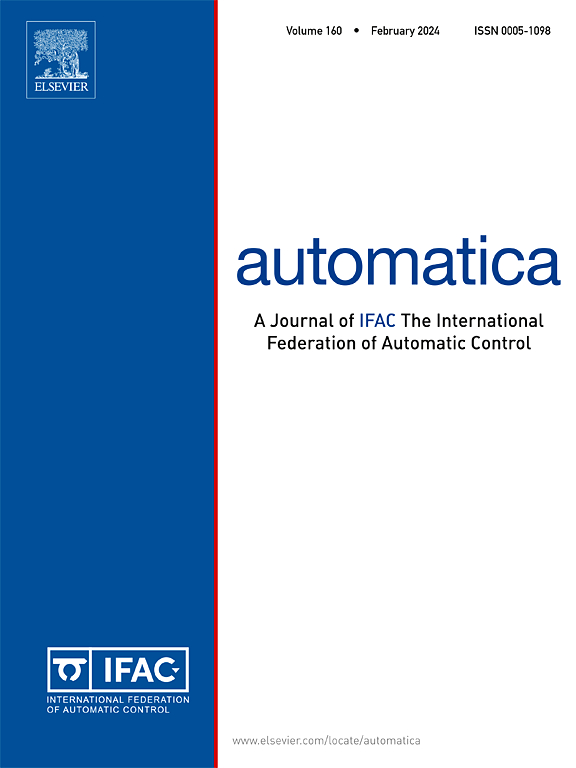On reconstructing high derivatives of noisy time-series with confidence intervals
IF 5.9
2区 计算机科学
Q1 AUTOMATION & CONTROL SYSTEMS
引用次数: 0
Abstract
Reconstructing high derivatives of noisy measurements is an important step in many control, identification and diagnosis problems. In this paper, a heuristic is proposed to address this challenging issue. The framework is based on a dictionary of identified models indexed by the bandwidth, the noise level and the required degrees of derivation. Each model in the dictionary is identified via cross-validation using tailored learning data. It is also shown that the proposed approach provides heuristically defined confidence intervals on the resulting estimation. The performance of the framework is compared to the state-of-the-art available algorithms showing noticeably higher accuracy. Although the results are shown for up to the 4-th derivative, higher derivation orders can be used with comparable results. An associated python module is made available via: pip install ML_derivatives.
带置信区间的噪声时间序列高导数重构
在许多控制、识别和诊断问题中,重建噪声测量的高导数是重要的一步。本文提出了一种启发式方法来解决这一具有挑战性的问题。该框架基于一个由带宽、噪声水平和所需派生程度索引的已识别模型的字典。字典中的每个模型都是通过使用定制的学习数据进行交叉验证来识别的。结果还表明,该方法提供了启发式定义的估计置信区间。将该框架的性能与最先进的可用算法进行比较,显示出明显更高的准确性。虽然结果显示到第4阶导数,更高的导数阶数可以用于比较的结果。相关的python模块可通过:pip install ML_derivatives获得。
本文章由计算机程序翻译,如有差异,请以英文原文为准。
求助全文
约1分钟内获得全文
求助全文
来源期刊

Automatica
工程技术-工程:电子与电气
CiteScore
10.70
自引率
7.80%
发文量
617
审稿时长
5 months
期刊介绍:
Automatica is a leading archival publication in the field of systems and control. The field encompasses today a broad set of areas and topics, and is thriving not only within itself but also in terms of its impact on other fields, such as communications, computers, biology, energy and economics. Since its inception in 1963, Automatica has kept abreast with the evolution of the field over the years, and has emerged as a leading publication driving the trends in the field.
After being founded in 1963, Automatica became a journal of the International Federation of Automatic Control (IFAC) in 1969. It features a characteristic blend of theoretical and applied papers of archival, lasting value, reporting cutting edge research results by authors across the globe. It features articles in distinct categories, including regular, brief and survey papers, technical communiqués, correspondence items, as well as reviews on published books of interest to the readership. It occasionally publishes special issues on emerging new topics or established mature topics of interest to a broad audience.
Automatica solicits original high-quality contributions in all the categories listed above, and in all areas of systems and control interpreted in a broad sense and evolving constantly. They may be submitted directly to a subject editor or to the Editor-in-Chief if not sure about the subject area. Editorial procedures in place assure careful, fair, and prompt handling of all submitted articles. Accepted papers appear in the journal in the shortest time feasible given production time constraints.
 求助内容:
求助内容: 应助结果提醒方式:
应助结果提醒方式:


